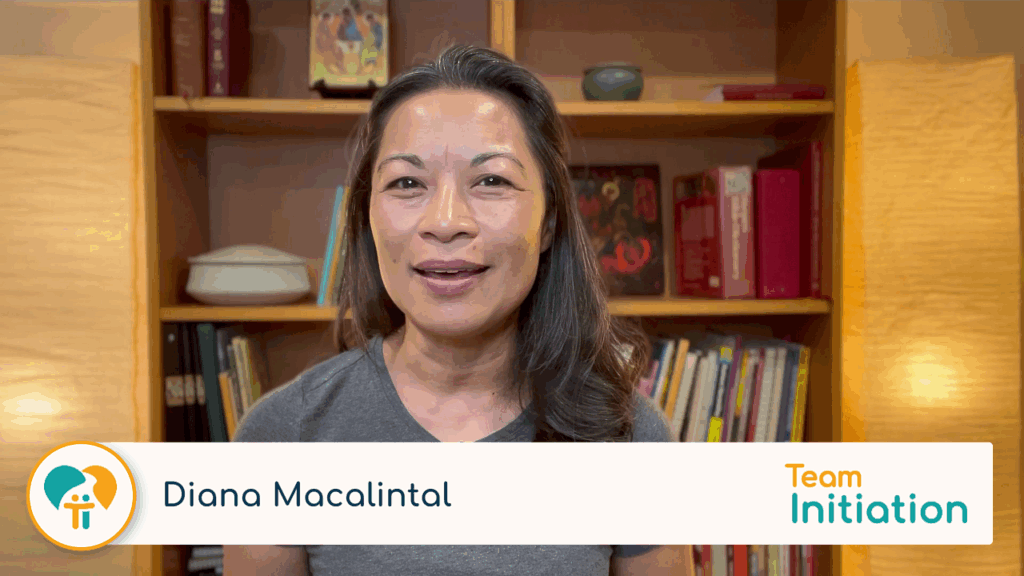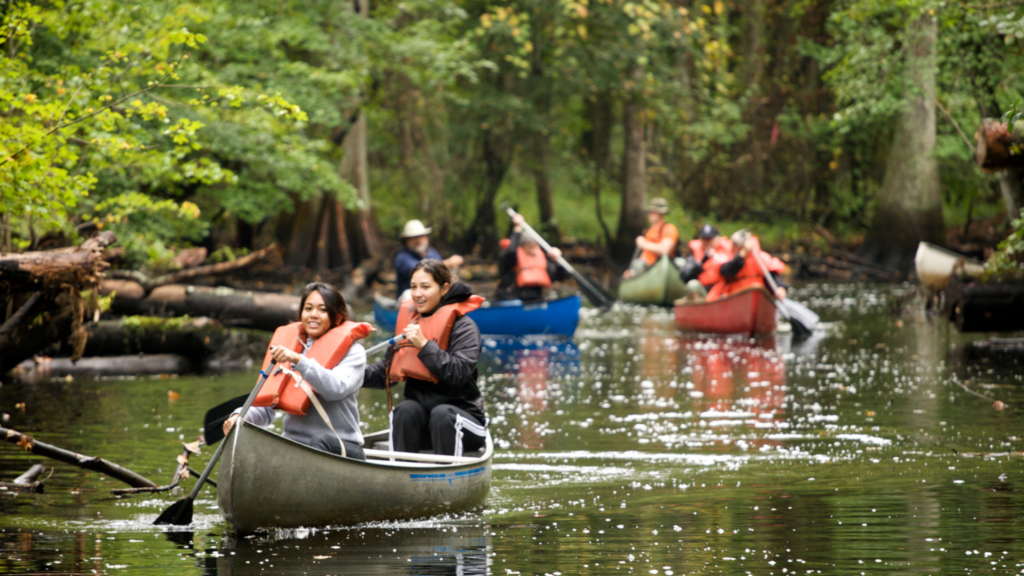 A while back I was talking with a group of RCIA catechists from another parish (something I highly encourage on a regular basis). I was learning about their process and they were asking me about ours (not an unusual conversation among RCIA catechists). During this dialogue one of the catechists asked me how often we used videos in our process. I had to pause because I had to think for a moment, which created a somewhat longer than expected silence. I eventually said, “Almost never,” to which I got a sort of stunned silence in response, like they couldn’t comprehend what I had said. This opened up a whole new avenue of discussion… one which I thought would be good to share.
A while back I was talking with a group of RCIA catechists from another parish (something I highly encourage on a regular basis). I was learning about their process and they were asking me about ours (not an unusual conversation among RCIA catechists). During this dialogue one of the catechists asked me how often we used videos in our process. I had to pause because I had to think for a moment, which created a somewhat longer than expected silence. I eventually said, “Almost never,” to which I got a sort of stunned silence in response, like they couldn’t comprehend what I had said. This opened up a whole new avenue of discussion… one which I thought would be good to share.
Now don’t get me wrong… I don’t want to completely demonize the use of videos and PowerPoints, but I do believe there’s a proper time and place for their use, And when it comes to our regular catechetical sessions a minimalist approach is best.
Making it a personal journey
My previous post noted how we need to focus on the individual, not the group. That includes employing a personal approach in our regular catechetical sessions. As catechists, we want to facilitate discussion and personal interaction. A dialogue. Videos and PowerPoints, by their very nature, tend to be monologues… one-way conversations. While videos and PowerPoints can provide some excellent information with high quality production values, they are still just lectures where we end up talking “at” the seekers instead of “with” them.
Engaging through discussion, not presentations
If you haven’t guessed by now, I’m a big fan of the Socratic method when it comes to teaching: Engaging the group with questions and active dialogue which helps to stimulate critical thinking. Translating that into catechetical language and practice, it would be taking a mystagogical approach. Remember, we’re not trying to “teach” them the Catholic faith, we’re assisting in their “conversion” to the Christian life. As catechist we are not so much “teachers” as we are “evangelists.” We’re not just imparting knowledge, we’re sharing our passion for Christ and his church.
Embracing a mystagogical approach
When RCIA catechists talk about mystagogy, we have a tendency to focus on that fourth and final stage of the RCIA process, the period of mystagogy. But mystagogy isn’t just a single point in the RCIA journey, it is a process that should be employed throughout the catechumenate. It is a process that asks us to look back at moments and events to see where Christ has been active in our lives.
For catechumens and candidates this becomes an invaluable formation tool, allowing them to see and become closer to God. If we limit the mystagogical process to the scrutinies or the time after their initiation, we’re too late. If we truly believe that it was the action of the Holy Spirit that brought them to our door, we owe it to them to see this for themselves as early and as often as possible. This not only includes reflecting back on the previous Sunday’s Mass, but other parish activities and events, and other personal experiences.
Curating your videos and PowerPoints carefully
As I stated before, I don’t want to completely demonize the use of videos and PowerPoints. A first-rate video can often provide insight and perspective on a topic. But far too often they become a crutch. Pick one or two that really work for you, and dump the rest. And always leave plenty of time for discussion after. As for PowerPoints, there are some topics where graphics can be extremely helpful. But again, this should be the exception not the rule. Pick only a handful where they really work best and dump the rest.
Making room for the Holy Spirit
As catechists we spend a lot of time planning and preparing for our sessions, and like many catechists you might feel like there’s never enough time to cover everything you want to cover. Unfortunately the pressure to “stick to the script” can force out the movement of the Holy Spirit. There have been more than a few occasions where I’ve ended up chucking my entire plan for the evening because the table’s discussion turned a different direction. Was mystagogy still happening? Yes. Was catechesis still happening? Yes. Then the session was a success!
Perhaps one of the hardest lessons I’ve learned as an RCIA catechist was that my plan may not be God’s plan. So rather than fight that, work with it. By dumping your syllabus for a liturgically based calendar, and by building flexibility into your session plans, you can make room for the Holy Spirit. Remember, being open year-round means you get to play the long game. You don’t have to feel pressured to cover “x” number of topics within “x” number of weeks. The beauty of our liturgical calendar and our liturgical seasons is that if you miss discussing a certain topic, there are plenty of moments where those topics will come around again.
Your Turn
What are the most prevalent forms of “busy-ness” discussed in your faith community? What peripheries and margins are you being called to through your RCIA ministry? Share your thoughts in the comments below.


















I enjoy interaction with the seekers – hearing their input gives me an idea of what they understand and some of the questions they ask can be a challenge. keeping a relaxed atmosphere and simple discussion creates a great environment for learning – I love the way Jesus taught by telling stories
You may be interested on a current experience I m having with an enquirer who is Iranian and speaks Farsi. His English is limited but improving, and my farsi is non-existent. We have been looking at Gospel stories of Jesus- birth, death, resurrection over an extended period of about 10 months. As may be imagined any complex explanations are impossible. I have been setting him a passage to read in his Farsi bible each week. When we meet on Sunday, I read it in English and we talk about it. Recently we looked at the Road to Emmaus. Then I showed him a short video in English of the same reading. When we got to the disciples sitting down to break bread, there was light-bulb moment of connection with his experience of seeing people receive communion — “the bread” in his words. I was delighted! We then went on to talk about Jesus presence in the Eucharist.
We tried using video presentations a couple of years ago. We would show the video, ask the group if they had any questions. They would say “no” and that would be the end of our class. About halfway through the year we abandoned the videos. We realized that we were not making personal connections with the group and we were not getting to know them.
When we went back to the personal teachings, the group, team, Cathechumens, Candidates grew closer together and became a very close, tight knit group.
We use powerpoints and videos as the to present the main ideas to discuss for the session. This will lead into small group discussions with the sponsors where the sponsors will need to faciliate the sharing. I find that it is important to have the powerpoint/video sessions to place everyone on the same page for the discussion otherwise everyone will be starting from different perspective. The quality of facilitating will be crucial, thank God that we always have a lively discussion more often than not.